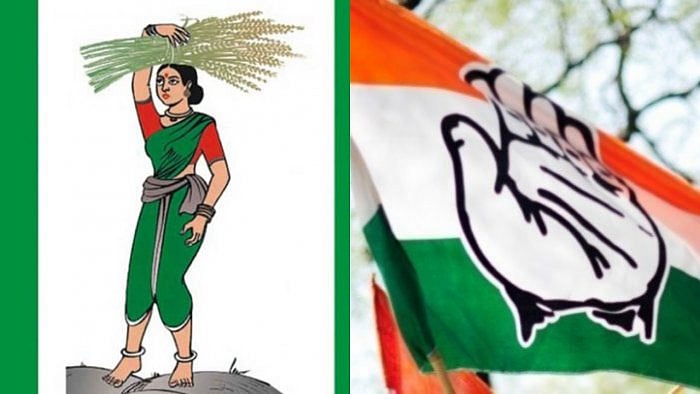
The most influential triumvirate in the Congress party - Dharam Singh, Mallikarjun Kharge and H K Patil - are walking towards the conference hall of the Vidhana Soudha to have a final meeting with the AICC observer Vilasrao Deshmukh in 2004.
This reporter asks them, who? Patil raises his eyebrows to point to Dharam Singh who appears the most relaxed. Kharge stoically says: “Dil milen ya na milen, haath milaa ke chalo.” It means: whether your heart is in line with that decision or not, you go along with it.
The decision-maker in this Congress-JDS coalition government, a first for Karnataka, was sitting several kilometres away. Former Prime Minister and JD(S) supremo H D Deve Gowda declined to back his bitter rival for Vokkaliga supremacy in the Old Mysuru region, outgoing chief minister S M Krishna.
The JDS ran a vicious “America Gowda” campaign against Krishna and won 58 seats in the hung assembly against Congress’ 67. BJP, the single largest party, had 79 members.
Kharge did not make the cut because in 1985, he pointed out lapses in the public works and irrigation departments held by Gowda in the Janata government. Dharam Singh, the “Ajatashatru,” (one without enemies), who listened patiently to whatever Gowda wanted, was his choice for the CM’s post.
This decision to allow the Congress to hold the CM’s post brought heartburn to Siddaramaiah who always believed Gowda could have fought harder to put him in the seat. Siddaramaiah was deputy chief minister and JDS legislature party leader, but knew real power rested with first-time MLA and Gowda’s third son, H D Kumaraswamy, who took the call on which of the party MLAs could become ministers.
In contrast, Congress was appreciative of Siddaramaiah and fellow senior leader M P Prakash. “Chalo mansha hain ji yeh Siddaramaiah, Prakash jaise log,” ( These are nice guys, leaders like Siddaramaiah, Prakash), Dharam Singh had once mentioned to this reporter. The high point of this government was the killing of sandalwood smuggler Veerappan ( it had been inadvertently reported last week that Krishna was relieved).
R L Jalappa, a staunch follower of the late Devaraj Urs, mentored Siddaramaiah to address huge meetings of the Ahinda (an acronym coined then for minorities, backward classes and Dalits). Siddaramaiah was expelled from the JDS for this. He formed the All India Progressive Janata Dal (AIPJD) but later joined the Congress at the behest of Sonia Gandhi.
The tantalizing by-election for his Chamundeshwari assembly seat saw JDS, BJP and many in Congress work together to defeat him. He scraped through with 257 votes.
Parallelly, it occurred to Kumaraswamy that he could be the CM. After months of backroom negotiations with state BJP and RSS votaries, he withdrew the support of 42 JDS MLAs to the Congress-JDS government. Dharam Singh took it in his stride and recited an Urdu proverb that meant when there is power, people flock to you. When power goes, people also go away.
The BJP national leadership, on record, was against the 20:20 agreement Kumaraswamy formed with B S Yediyurappa. The latter ignored special emissary Ved Prakash Goyal (father of union commerce minister Piyush Goyal), who waited for him for two days in a hotel. “It is his ( Yediyurappa) greed for power that is making him forget the principles of our party. We are against this coalition,’’ Goyal Sr had told this reporter in a television interview.
But Yediyurappa was a determined man. He defied all odds and became the deputy CM in the Janata Dal-BJP government. The 20:20 sarkar did not match the growing popularity of 20:20 cricket. Politicking overtook all developmental activities. CM Kumaraswamy went about staying in villages which benefited because the officials repaired and tarred the roads.
The mining lobby led by Gali Janardhan Reddy accused Kumaraswamy of taking a bribe of Rs 150 crore. No evidence was given, but the perception war was on. Kumaraswamy retaliated by asking his officials to open steel mills in Reddy’s fiefdom of Ballari.
The government collapsed after Kumaraswamy played hide and seek and finally did not hand over charge to Yediyurappa after 20 months. The governor imposed President’s rule on October 9, 2007. But no one realised that the tears Yediyurappa shed could be a line to victory.
(The writer is a senior journalist based in Bengaluru)
